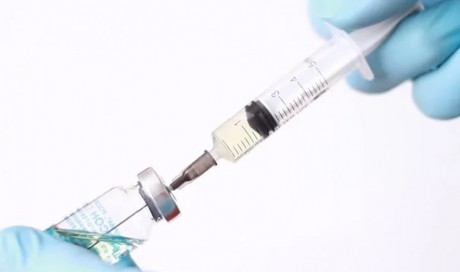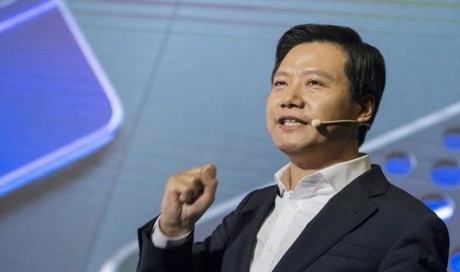7) What was the effective tax rate (ETR) for the second quarter of 2018?
The ETR for the second quarter of 2018, calculated in accordance with GAAP, was 19.3% as compared to 17.6% for the first quarter of 2018. Excluding charges and credits, the ETR for the second quarter of 2018 was 17.2%. There were no charges and credits in the first quarter of 2018.
8) How many shares of common stock were outstanding as of June 30, 2018 and how did this change from the end of the previous quarter?
There were 1.384 billion shares of common stock outstanding as of June 30, 2018. The following table shows the change in the number of shares outstanding from March 31, 2018 to June 30, 2018.
(Stated in millions)
Shares outstanding at March 31, 2018 1,385
Shares issued to optionees, less shares exchanged -
Vesting of restricted stock -
Shares issued under employee stock purchase plan -
Stock repurchase program (1)
Shares outstanding at June 30, 2018 1,384
9) What was the weighted average number of shares outstanding during the second quarter of 2018 and first quarter of 2018, and how does this reconcile to the average number of shares outstanding, assuming dilution used in the calculation of diluted earnings per share, excluding charges and credits?
The weighted average number of shares outstanding was 1.384 billion during the second quarter of 2018 and 1.385 billion during the first quarter of 2018.
The following is a reconciliation of the weighted average shares outstanding to the average number of shares outstanding, assuming dilution, used in the calculation of diluted earnings per share, excluding charges and credits.
(Stated in millions)

10) What are Schlumberger Production Management (SPM) projects and how does Schlumberger recognize revenue from these projects?
SPM projects are focused on developing and comanaging production on behalf of Schlumberger customers under long-term agreements. Schlumberger will invest its own services, products, and in some cases, cash, into the field development activities and operations. Although in certain arrangements Schlumberger recognizes revenue and is paid for a portion of the services or products it provides, generally Schlumberger will not be paid at the time of providing its services or upon delivery of its products. Instead, Schlumberger recognizes revenue and is compensated based upon cash flow generated or on a fee-per-barrel basis. This may include certain arrangements whereby Schlumberger is only compensated based upon incremental production it helps deliver above a mutually agreed baseline.
11) How are Schlumberger products and services that are invested in SPM projects accounted for?
Revenue and the related costs are recorded within the respective Schlumberger Segment for services and products that each Segment provides to Schlumberger’s SPM projects. This revenue (which is based on arms-length pricing) and the related profit is then eliminated through an intercompany adjustment that is included within the “Eliminations & other” line (Note that the “Eliminations & other” line includes other items in addition to the SPM eliminations). The direct cost associated with providing Schlumberger services or products to SPM projects is then capitalized on the balance sheet.
These capitalized investments, which may be in the form of cash as well as the previously mentioned direct costs, are expensed in the income statement as the related production is achieved and associated revenue is recognized. This amortization expense is based on the units of production method, whereby each unit is assigned a pro-rata portion of the unamortized costs based on total estimated production.
SPM revenue along with the amortization of the capitalized investments and other operating costs incurred in the period are reflected within Production.
12) What was the unamortized balance of Schlumberger’s investment in SPM projects at June 30, 2018 and how did it change in terms of investment and amortization when compared to March 31, 2018?
The unamortized balance of Schlumberger’s investments in SPM projects was approximately $4.1 billion at both June 30, 2018 and March 31, 2018. These amounts are included within Other Assets in Schlumberger’s Condensed Consolidated Balance Sheet. The change in the unamortized balance of Schlumberger’s investment in SPM projects was as follows:
(Stated in millions)
Balance at March 31, 2018 $4,112
SPM investments 194
Amortization of SPM investment (135)
Translation & other (95)
Balance at June 30, 2018 $4,076
13) What was the amount of WesternGeco multiclient sales in the second quarter of 2018?
Multiclient sales, including transfer fees, were $117 million in the second quarter of 2018 and $119 million in the first quarter of 2018.
14) What was the WesternGeco backlog at the end of the second quarter of 2018?
The WesternGeco backlog, which is based on signed contracts with customers, was $317 million at the end of the second quarter of 2018. It was $358 million at the end of the first quarter of 2018.
15) What were the orders and backlog for the Cameron OneSubsea and Drilling Systems businesses?
The OneSubsea and Drilling Systems orders and backlog were as follows:

Share This Post














